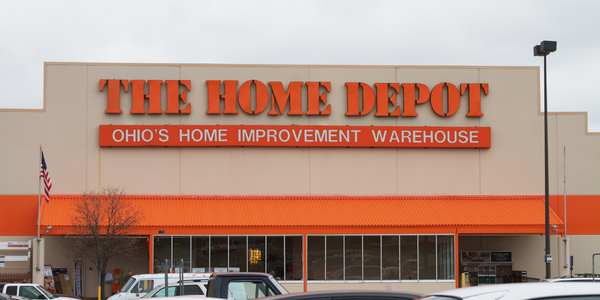公司规模
Large Corporate
地区
- Africa
国家
- South Africa
产品
- ARIS IT Architect
技术栈
- Enterprise Architecture
- Model-Driven Design
实施规模
- Enterprise-wide Deployment
影响指标
- Productivity Improvements
- Cost Savings
技术
- 应用基础设施与中间件 - API 集成与管理
适用功能
- 商业运营
用例
- 基础设施检查
服务
- 系统集成
关于客户
Santam is South Africa’s leading short-term insurer with assets of more than R17 billion. The company has a nationwide, world-class contact center infrastructure, a thriving intermediary network and more than 650,000 policy holders. Santam also holds business interests in Zimbabwe, Malawi, Uganda, Tanzania and Zambia as well as strategic investments in various companies within the insurance industry, including the subsidiary Santam Namibia Ltd.
挑战
Santam, South Africa’s leading short-term insurer, was facing challenges with its IT changes which were difficult and expensive. The company was using Microsoft® Word templates, fragmented tools and different methodologies which led to frustration among employees. The company needed an Enterprise Architecture (EA) with a repository-based product to support its drive to optimize the organization. The aim was to develop an integrated environment that’s more agile and supports the business strategy.
解决方案
Santam turned to ARIS to develop an Enterprise Architecture (EA) using a central, robust repository to align business and IT. An EA/SDLC methodology was based on TOGAF® model-driven design concepts and standard ARIS model types. Re-usable building blocks were underpinned by a common metamodel. The enterprise has shifted from redundant paper specifications to rich model-generated content. All deliverables were based on ARIS model types, objects and attributes, which were stored in the central repository. The repository enables Santam to create a uniform inventory of systems and technologies and also reduce the complexity of its IT environment.
运营影响
数量效益

Case Study missing?
Start adding your own!
Register with your work email and create a new case study profile for your business.
相关案例.

Case Study
The Home Depot's IT Innovation with Nutanix: A Case Study
The Home Depot, the world's largest home improvement retailer, was facing a significant challenge in enhancing the performance and scalability of its IT infrastructure while reducing the total cost of ownership (TCO). The company's traditional approach of upgrading to faster servers and more efficient storage was no longer sufficient. The Home Depot needed a more innovative solution to reduce TCO and improve operational efficiency for its vast retail store and e-commerce business. The company was also looking for a way to consolidate its server, storage, and virtualization teams into a single operations group to optimize and manage the entire infrastructure stack from a single console. The challenge was to find a solution that would allow them to achieve these goals while also enabling them to quickly deploy new applications to internal users and customers.

Case Study
Modular AI Defect Inspection Solution for Efficient Semiconductor Equipment Upgrades
Smasoft Technology Co., Ltd., a System Integrator that develops industrial automation software and offers AI application solutions, was commissioned by a semiconductor equipment manufacturer to implement AI inspection features into their Extreme Ultraviolet Light (EUV) pod inspection machines. The existing AOI software in the EUV pod inspection machines could only identify defective products but could not trace the cause of the defects. The manufacturer wanted to upgrade their machines with AI features to make the products more useful. The AI solution needed to complete the analysis of 380 images for a single pod within two minutes and inspect different materials simultaneously. This required multiple sets of AI models for interpretation. The solution also needed to be installed in a cabinet in the lower half of the machines, which posed a challenge due to the limited space. Smasoft needed to purchase a hardware solution with strong computing performance, stable operation, compact size, and flexible configuration to overcome these challenges.

Case Study
Revamping EE's Legacy ERP: A Case Study on BT's Strategic Transformation
EE, even after its merger with BT, was operating its ERP estate on legacy infrastructure, hosted on the premises of a third-party supplier. This outdated system resulted in a volume-based operational model, higher time to market, longer delivery cycles, and unsatisfactory customer experience. BT recognized the need for a strategic transformation of these aging ERP systems and sought a partner who could proactively manage application services. The partner was also expected to handle development requirements associated with application management services, drive accountability, and ownership with a time and target-driven transformation of these services. BT's primary goals were to improve customer experience, reduce cycle time, and measure these improvements with precision.

Case Study
IFFCO Boosts IT Performance and Innovates Agriculture with Oracle Cloud
Indian Farmers Fertiliser Cooperative Ltd. (IFFCO), the world’s largest manufacturer and marketer of fertilizers in the cooperative sector, was facing several challenges in its quest to innovate and improve the livelihood of farmers in India. The organization had recently launched a new product, nano urea, which brought new demands to IFFCO’s cloud computing needs. The organization needed a reliable cloud vendor to support the processes of 6–7 new manufacturing plants during the upcoming year, enhancing its production capability 300–350 million bottles of nano urea to meet increasing demand. IFFCO’s cloud adoption was driven by a need to innovate. The organization wanted capabilities for a dynamic business that can adapt to the changing needs of the market while growing fast. However, it was inhibited by rigid on-premises data center deployments and the overhead of maintaining legacy systems. IFFCO wanted to apply the elasticity and availability of cloud for improving overall performance of applications at lowest possible operational overhead. Lastly, IFFCO needed to provide the benefits of its technology to all its stakeholders, including employees, members, transporters, and farmers, some of whom have limited literacy. To accommodate all stakeholders, IFFCO wanted to add a voice interface to its applications.

Case Study
Innovative Cloud Solution Boosts Generali Vitality's User Engagement and Retention
Generali Vitality, an innovative platform promoting a healthy lifestyle, faced a challenge in expanding its user base beyond Germany, Austria, and France. The company aimed to become a lifetime health partner to its members by offering a best-in-class user experience across all user journeys and channels. The goal was to increase user engagement and retention with a unique product feel. However, the challenge lay in optimizing and introducing new features continuously without lengthy product development and release cycles. The company needed a solution that could scale to tens of thousands of users, integrate multiple rewards partners, and be localizable for multiple markets and languages. To achieve this, Generali Vitality needed to collaborate with a partner that could provide a tailor-made solution.

Case Study
Zensar and NetApp: Accelerating Enterprise-Wide Digital Transformation
In the digital era, businesses are striving to deploy high-quality experiences faster to succeed. The acceleration of technology innovation and the aspiration to adopt digital business models present challenges for organizations to meet their business needs. Managing multicloud environments has been a significant challenge for many customers due to different consoles, teams, and skills required to realize the benefits of these clouds. Business leaders are mandating their IT departments to consolidate IT infrastructure to save energy costs, host more applications, share resources across different departments, and enhance security. These requirements often translate into fewer data centers and consolidated server, networking, and storage resources that can host multiple applications shared by multiple departments.



